Physical Address
304 North Cardinal St.
Dorchester Center, MA 02124
Physical Address
304 North Cardinal St.
Dorchester Center, MA 02124
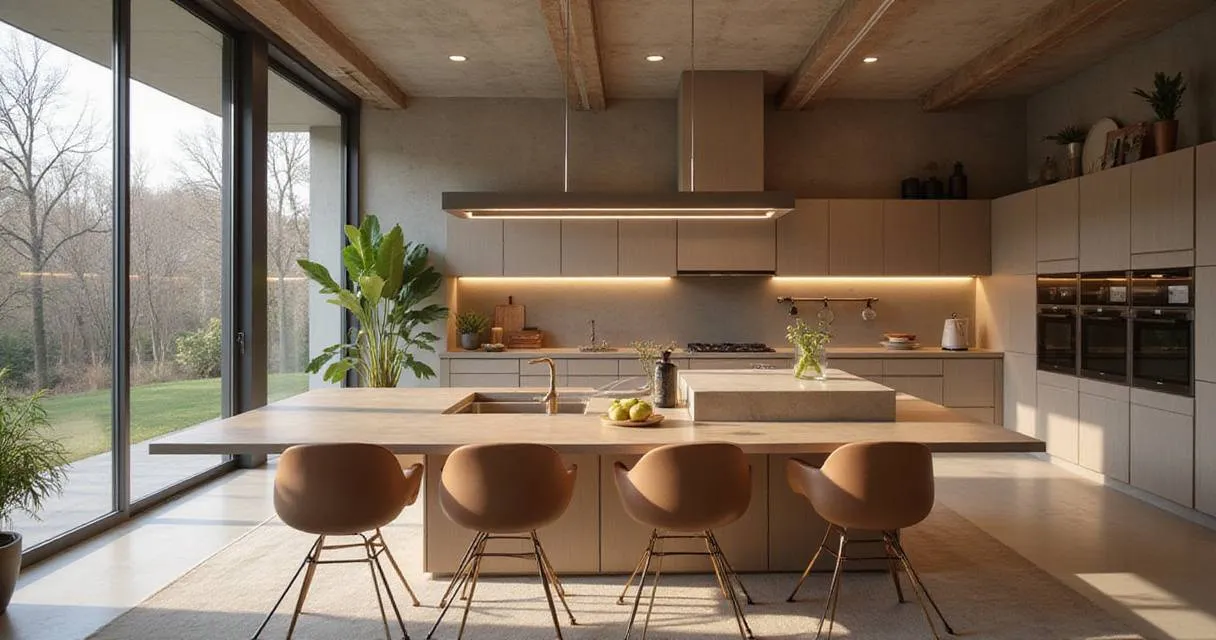
Transform your kitchen with 24 smart makeover steps. Expert guide covering tech integration, connected appliances, and modern design for your dream space.
Let’s be honest, the thought of renovating a kitchen can be completely overwhelming. You’re juggling outdated appliances, a layout that makes you crazy, and that lingering desire for a space that just looks better. It’s a lot. I’ve been in the trenches with countless homeowners, and I’ve seen that look of “where do I even begin?” more times than I can count. The secret? Thinking about how you actually live, first.
The most amazing kitchen transformations I’ve been a part of happened when we stopped thinking about the kitchen as just a room for cooking. It’s the new command center of the home. It’s where you brew that first cup of coffee, where the kids do their homework, and where you gather with friends. And today, it can be an intelligent space that actually helps you do all of that, better. This isn’t about filling your counters with gadgets. It’s about creating a kitchen that’s built for the future—your future.
Forget the intimidating jargon. We’re going to walk through this step-by-step, all 24 stages, from the first spark of an idea to the final, personalized touch. We’ll cover how to bake technology right into the design without making it feel cold or complicated, pick materials that look amazing and work hard, and build a flow that makes your daily life feel easier. It’s time to build a kitchen that’s not just beautiful, but brilliant.
Before you even think about paint colors or picking out a single smart plug, you need to get real about your goals. The most successful projects I’ve worked on started with a simple, honest conversation about frustrations. It’s about moving past aesthetics for a moment and asking what parts of your daily routine are a genuine pain.
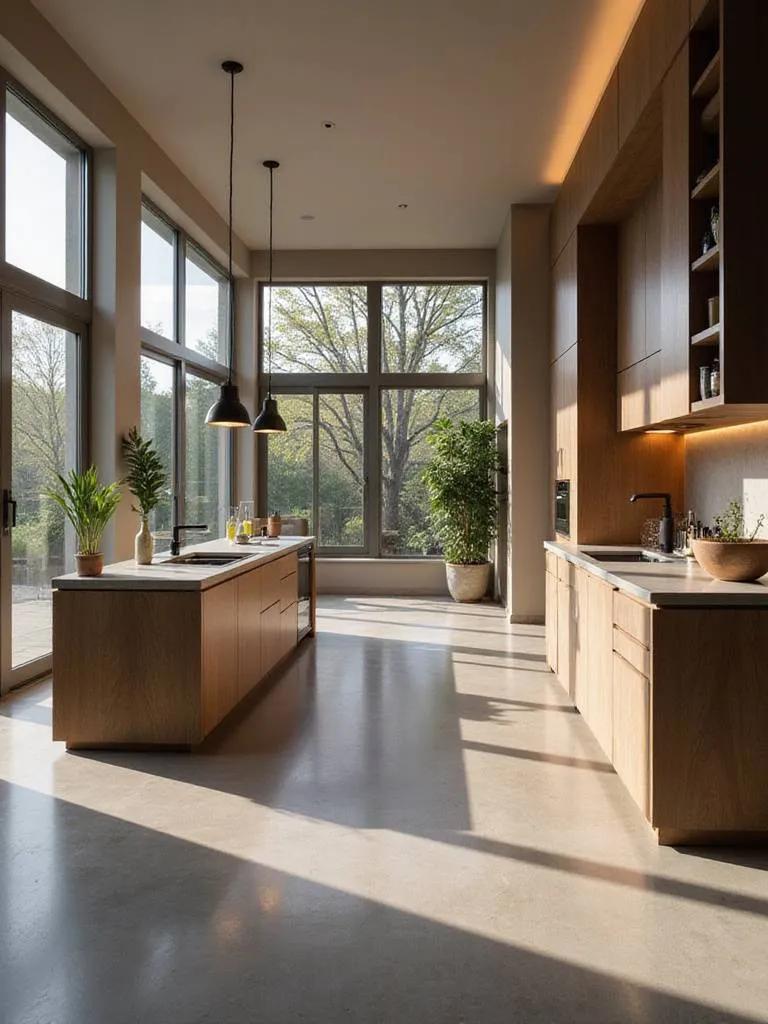
So, let’s make a couple of lists. It sounds basic, but trust me, this is the foundation for everything else.
I had a client once who was obsessed with getting a smart fridge with a giant screen. But when we dug into his lists, his biggest frustration was that he could never hear his kids calling for him from the playroom while he was cooking. His real “win” wasn’t a screen on the fridge; it was an integrated speaker system that let him stay connected to his family. See the difference? Solving real problems is what makes a kitchen truly smart.
With your two lists in hand, you’ve got a blueprint for a kitchen that solves your actual problems, not just one that looks good on Instagram. This is how we move from a room full of disconnected gadgets to an environment that feels like it’s working for you.
Alright, let’s talk about the budget. And I mean the real budget. For a modern kitchen, this isn’t just about cabinets and countertops anymore. The biggest mistake I see people make is forgetting to plan for the invisible infrastructure—the digital plumbing and wiring that makes all the smart stuff work. It’s not sexy, but it’s the most important investment you’ll make. A good rule of thumb is to set aside about 15-20% of your total budget just for the tech and the bones to support it. This is separate from your normal 10% contingency fund for unexpected issues.
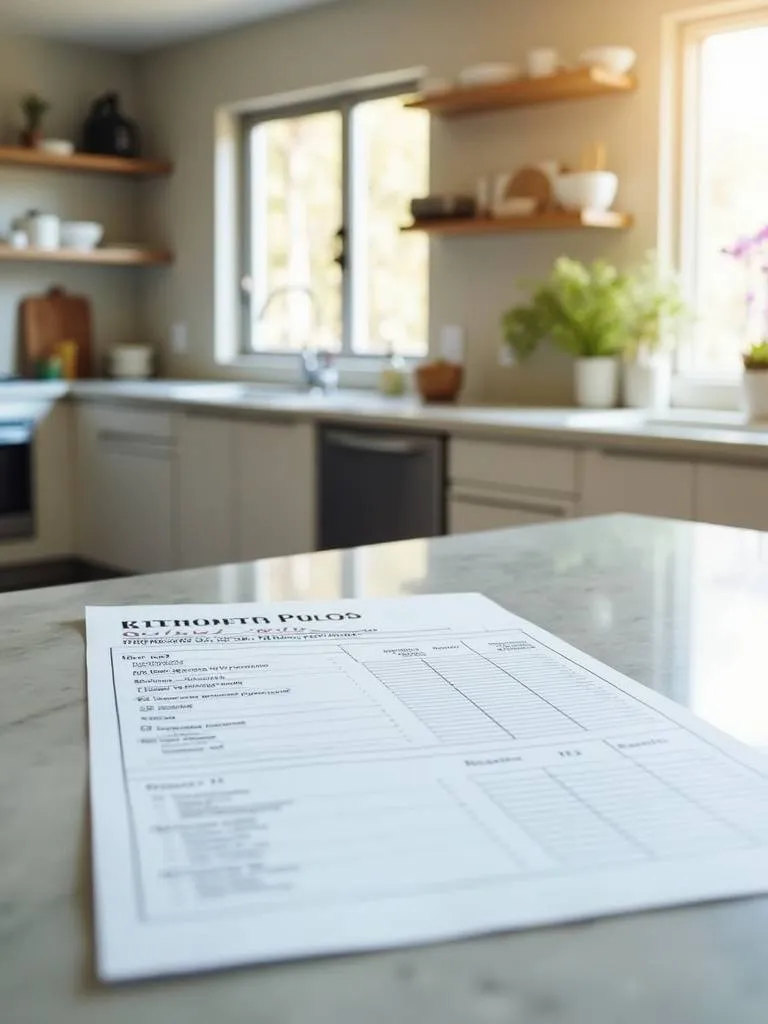
Break it down beyond the usual suspects. Yes, you need line items for cabinets, flooring, and appliances. But you also need to add new categories:
Thinking about this upfront saves so much heartache later. Sure, it feels like a big number, but studies show a kitchen with properly integrated tech can boost your home’s value significantly. What’s important is to focus your tech spending on solving the problems you identified in step one. Don’t get distracted by every shiny new object. A few high-quality, well-integrated systems are infinitely better than a drawer full of random gadgets that don’t talk to each other. I’ve learned from years of sourcing that a focused investment creates a foundation you can build on for years.
Now that the budget is grounded in reality, we can start thinking about how all this technology will actually play together.
Here’s where modern kitchen design really splits from the old way of doing things. You can’t just pick a fridge, then a dishwasher, then lights, and hope they all get along. You need to think about your “connected ecosystem” first. Imagine a symphony orchestra. You wouldn’t hire a bunch of talented musicians and just tell them to start playing. You need a conductor to make sure they’re all playing the same song, at the same time. Your smart home platform is that conductor.

This is a big decision, and it’s one you need to make early. Will your kitchen’s ‘brain’ be a mainstream platform like Google Home, Amazon Alexa, or Apple HomeKit? Or are you looking at a more dedicated, professional system like Control4 or Savant? There’s no single right answer, but the choice you make will guide every tech purchase that follows. It determines which devices will communicate smoothly and which will be a constant headache.
Once you’ve chosen your platform, you can create a tech map of your kitchen. Seriously, sketch it out. Where will the voice assistant ‘live’ so it can hear you clearly? Where do you need outlets—and I mean lots of them, including USB ports—to avoid a mess of power strips? Where does the smart display need to be so you can see a recipe without getting sauce on it? This is about creating a kitchen that anticipates your actions. Lights that know to dim for movie night. A fan that kicks on the moment you start searing a steak. An oven that gets its instructions straight from the recipe on your screen. This is where the magic really starts to happen.
With your digital conductor chosen, let’s bring in the first chair of the orchestra: the lighting.
In a smart kitchen, lighting isn’t just a fixture you screw a bulb into; it’s an architecture. Good kitchen lighting should feel like it’s responding to you, the time of day, and what you’re doing, often without you ever touching a switch. To get there, you have to stop thinking about a single overhead light and start thinking in three intelligent layers.
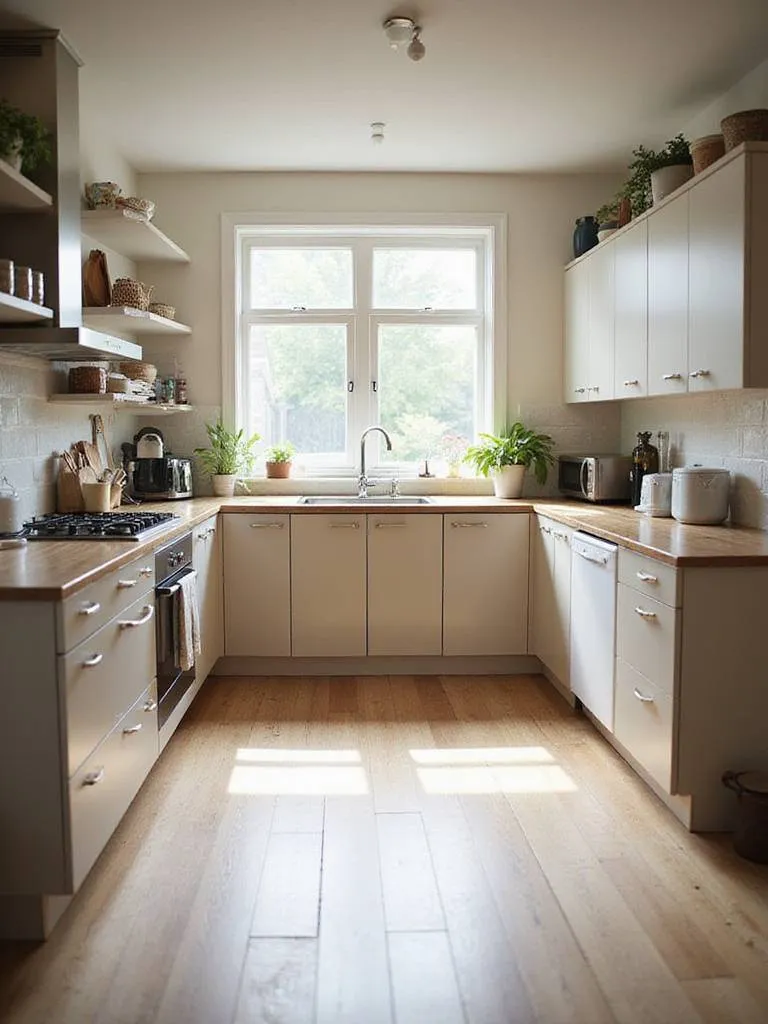
First is your Ambient Layer. This is your overall illumination, the foundation. Think recessed cans or flush-mount fixtures. But here’s the smart part: they should be tunable. They can mimic the natural arc of the sun, providing bright, cool, energizing light in the morning and shifting to a warm, soft, calming glow as you head into the evening. Your body’s natural rhythm will thank you for it. Second is the Task Layer. This is your workhorse lighting. Under-cabinet strips are perfect for this. It’s the focused, no-nonsense light you need right over your countertops when you’re dicing an onion or trying to read a recipe. It can be set to turn on automatically when you enter a specific “work zone.” Finally, there’s the Accent Layer. This is the fun part. It’s the soft light inside a glass-front cabinet, the subtle strip of LEDs along the toe-kick of your island, or the art light over a favorite picture. It’s what creates mood, drama, and personality.
A well-designed system will have pre-set ‘scenes’ that you can call up with your voice. “Hey Google, set kitchen to ‘Cooking Mode’” could bring your task lighting to 100% and ambient to 80%. “Alexa, it’s ‘Dinner Party’ time” could dim the main lights, turn up the accents, and even start your favorite playlist. We can even integrate motion sensors for those late-night trips for a glass of water, lighting a safe path automatically. When you look closely, you’ll see it’s this dance between natural and programmed light that makes a kitchen feel truly alive.
Good lighting shows off a good layout, so let’s turn our attention to the physical flow of your space.
The classic kitchen “work triangle”—that path between the sink, stove, and fridge—is a good starting point, but it’s a bit dated for how we live now. A truly smart layout thinks more in terms of “zones” that are supported by technology. It’s time to analyze your kitchen’s daily dance and see how tech can help you take fewer steps and make less effort.
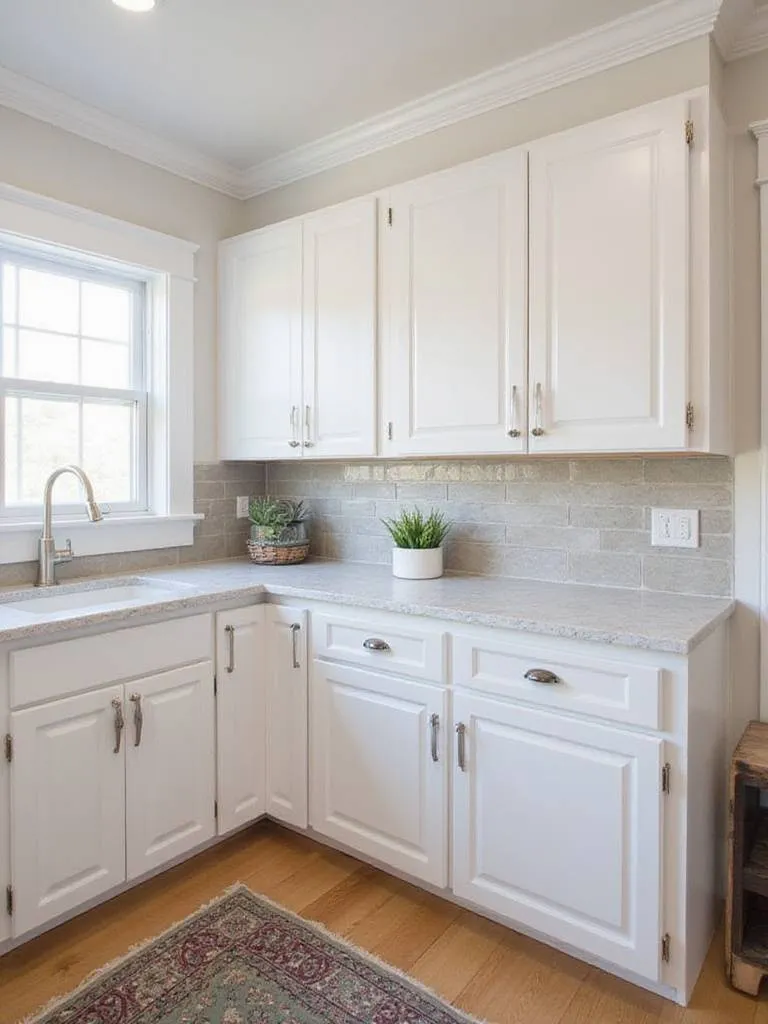
Grab a notepad and walk through your most common routines. Making morning coffee. Packing lunches. Preparing a big family dinner. Where do you walk? What do you reach for? Where are the bottlenecks? Be a detective in your own space. Maybe you realize you’re constantly walking back and forth across the kitchen just to throw away vegetable scraps. That tells you a new prep zone with a pull-out trash bin and an integrated smart scale is a good idea.
Could a dedicated coffee bar with a scheduled brewer and an automated milk frother streamline your morning madness? Can voice commands help when your hands are covered in dough? By mapping out your movements, you can see where technology becomes invisible support rather than an intrusive gadget. You want to make sure your smart display is visible from your main prep area and that your voice assistant can hear you over the sound of a sizzling pan. The goal here isn’t to force you to adapt to some new, futuristic system; it’s to design a system that adapts to your natural habits.
Now let’s look at the biggest physical elements in the kitchen and see how we can make them smarter, starting with your cabinetry.
When you’re planning a smart kitchen, your cabinets are no longer just wooden boxes for dishes. They are a critical part of your tech infrastructure. You have to think about them from the inside out, planning for charging, cable management, and device integration right from the start. Whether you’re getting brand-new cabinets, refacing your old ones, or just giving them a coat of paint, your choices need to support the tech you plan to use now—and in the future.
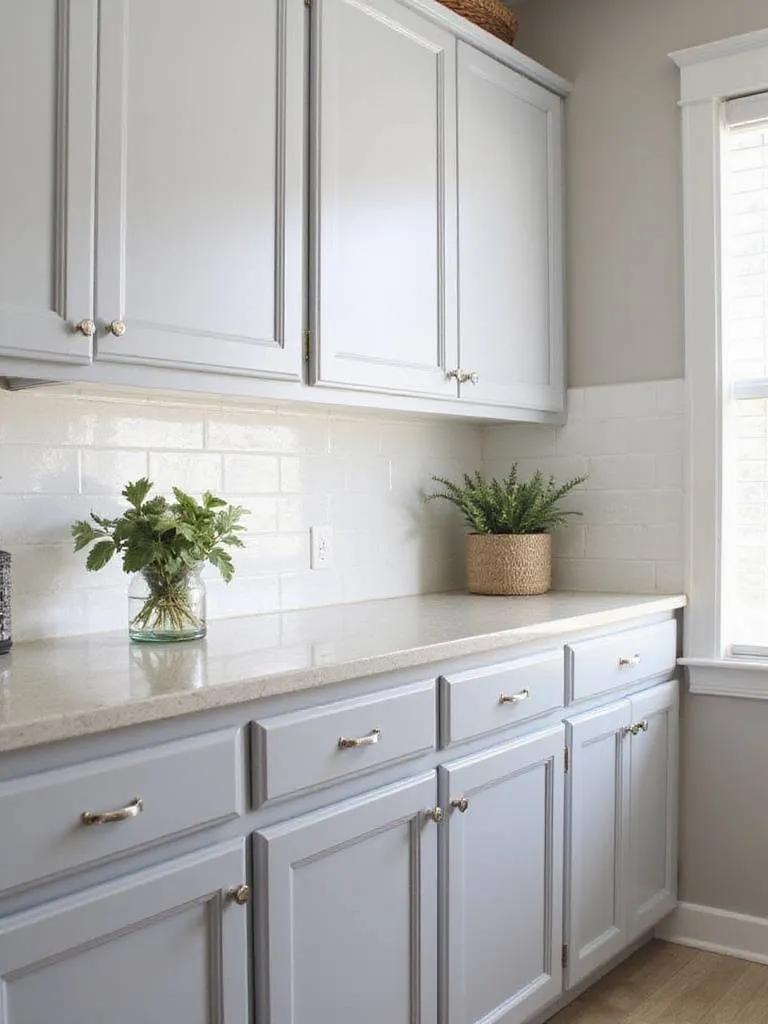
This means planning for things that didn’t exist in kitchens a decade ago. Think about including:
You also have to consider the unseen impacts. The placement of your cabinets, especially tall pantry units, can actually affect your Wi-Fi signal. Part of the planning is ensuring you don’t create dead zones right where you need connectivity the most. The best smart-ready cabinetry doesn’t scream “technology.” The craftsmanship is in the details—the perfectly concealed wire, the seamless charging station—that create storage that’s as intelligent as it is beautiful.
And what sits on top of those cabinets is just as important in a tech-forward kitchen.
Your countertops are more than just a pretty surface to chop on; in a connected kitchen, they are an active part of your tech ecosystem. When choosing a material, you have to think beyond just looks and durability and consider how it will interact with the technology you plan to embed within and place upon it.
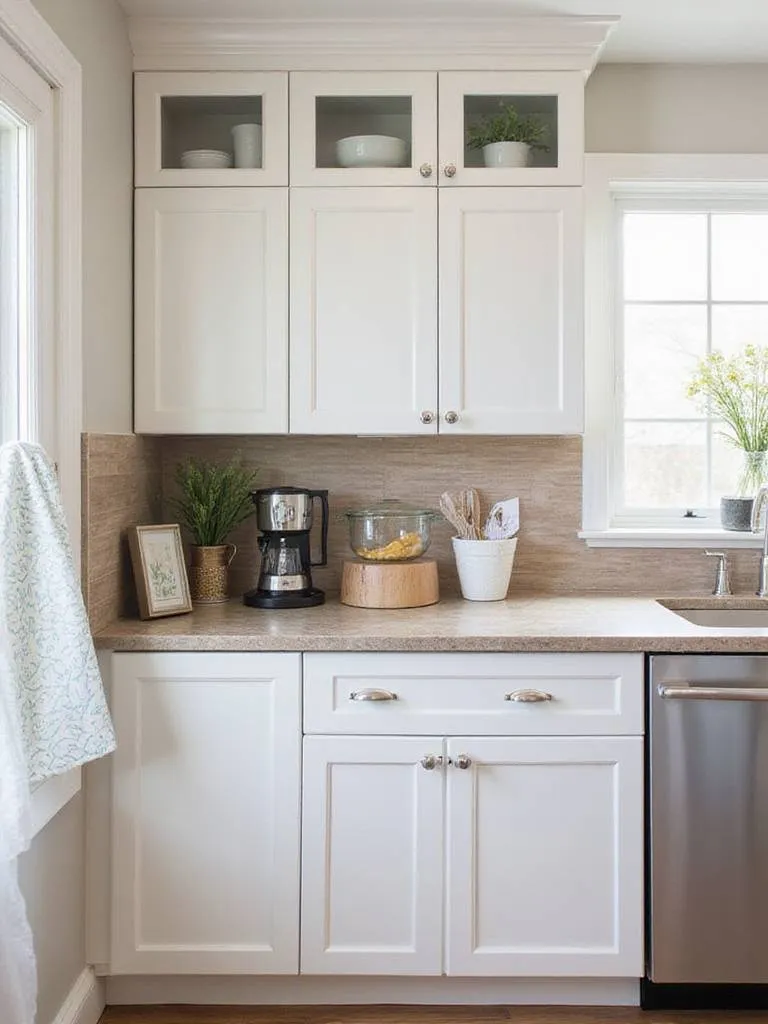
Of course, durable materials like quartz and granite are still fantastic choices. But the conversation now includes planning for some clever integrations. We can install pop-up outlets that sit flush with the counter and rise up only when you need them, keeping those beautiful lines clean. I love embedding Wireless Charging zones—or ‘pucks’—right into the stone near a breakfast bar or seating area, so you can just place your phone down to charge. It feels like a small thing, but it radically simplifies your day-to-day.
For the truly ambitious, some advanced countertops can even have small, waterproof displays integrated right under the surface for viewing recipes or controlling your home. This requires incredibly precise coordination between your countertop fabricator and your tech installer, but the result is something straight out of a sci-fi movie. The key takeaway is to see your countertops not as a passive slab, but as an interactive surface that actively supports your connected life.
Just behind the countertop is another surface that’s getting a major intelligence upgrade.
Traditionally, a backsplash was there for one reason: to protect your wall from the mess of cooking. In a modern kitchen, it’s a canvas for some of the most seamless and impressive tech integrations you can find. It serves as both a design statement and a control hub, blending smart functionality right into traditional materials like tile, stone, or glass.

Imagine a backsplash that has under-cabinet lighting built right in, and that lighting subtly shifts its brightness and Color temperature to match the time of day or the cooking task at hand. When you turn on your range, perhaps the light directly above it brightens automatically. We can even embed nearly invisible, touch-sensitive buttons into the backsplash itself. With a single tap on a specific tile, you could control your lights, turn on the ventilation hood, or skip to the next song on your playlist.
To make any of this work, the planning is critical. You have to ensure that the electrical wiring and any necessary control modules are in place before the tile or stone goes up. This way, you get all the functionality without any ugly conduits or exposed outlets cluttering the view. The real beauty here is in that blend—the timeless feel of a classic subway tile backsplash that just happens to be intelligent, supporting your kitchen’s smart features while looking absolutely fantastic.
From the backsplash, let’s look down to the foundation of the room itself.
Flooring might seem like the one thing in the kitchen that technology hasn’t touched, but you’d be surprised. A truly holistic smart kitchen design considers the floor an active component, contributing to comfort, safety, and even the room’s overall efficiency. It’s about choosing materials that are practical but also complement the high-tech aesthetic you’re building.

The most popular smart integration for flooring is radiant heat. Smart heated floors are a game-changer, especially on cold mornings. They can connect to your home automation system, learn your family’s schedule, and begin warming the floor just before you wake up, all while optimizing energy use. Beyond comfort, some advanced setups include LED pathway lighting embedded right into the floor or toe-kicks, creating a soft, automatic guide for midnight snack runs without having to turn on glaring overhead lights.
On a more technical level, you also have to consider how your flooring material might interact with your tech. This is where it gets a little nerdy, but it’s important. Some flooring materials can slightly interfere with Wi-Fi signals or the electromagnetic fields used for certain types of wireless charging. It’s not usually a deal-breaker, but it’s something to be aware of during the planning phase. The result is a foundation that’s literally working for you, adding layers of comfort and safety that operate invisibly under your feet.
With the room’s surfaces planned out, it’s time to fill it with the machines that do the real work.
Upgrading to connected appliances is about more than just getting a fridge with a Wi-Fi symbol. It’s about selecting a team of appliances that can communicate with each other and fit into the smart home ‘brain’ you’ve already chosen. The goal is coordination. Modern appliances can work together to time a meal perfectly, automatically adjust their energy use, and let you control and monitor them from anywhere.

Imagine this: your smart refrigerator knows you have chicken, broccoli, and lemons. It suggests a recipe on its screen and sends the cooking instructions directly to your oven, which then preheats to the correct temperature automatically. Meanwhile, your dishwasher knows it’s a peak energy usage time, so it waits until 2 a.m. to run its cycle, saving you money. Your range hood senses the steam from a boiling pot and adjusts its fan speed on its own. This isn’t science fiction anymore; this is the reality of a connected appliance ecosystem.
The key is to try and stick within a single brand’s ecosystem where possible, or to ensure the appliances you choose all support your primary smart home platform (like Google Home or Alexa). This prevents you from having to juggle five different apps just to manage your kitchen. This collaboration between appliances is a direct result of manufacturers finally realizing that what we want is harmony in our kitchens, not just a collection of individually smart but collectively dumb machines.
Of course, when you start cooking, you create smoke and steam. That’s where your next smart system comes in.
For years, a range hood had two settings: loud and louder. Smart ventilation systems are so much more. They are about proactively managing your home’s air quality. These systems can monitor the air and automatically kick into gear based on what’s happening on your cooktop, often before you even notice you need them.
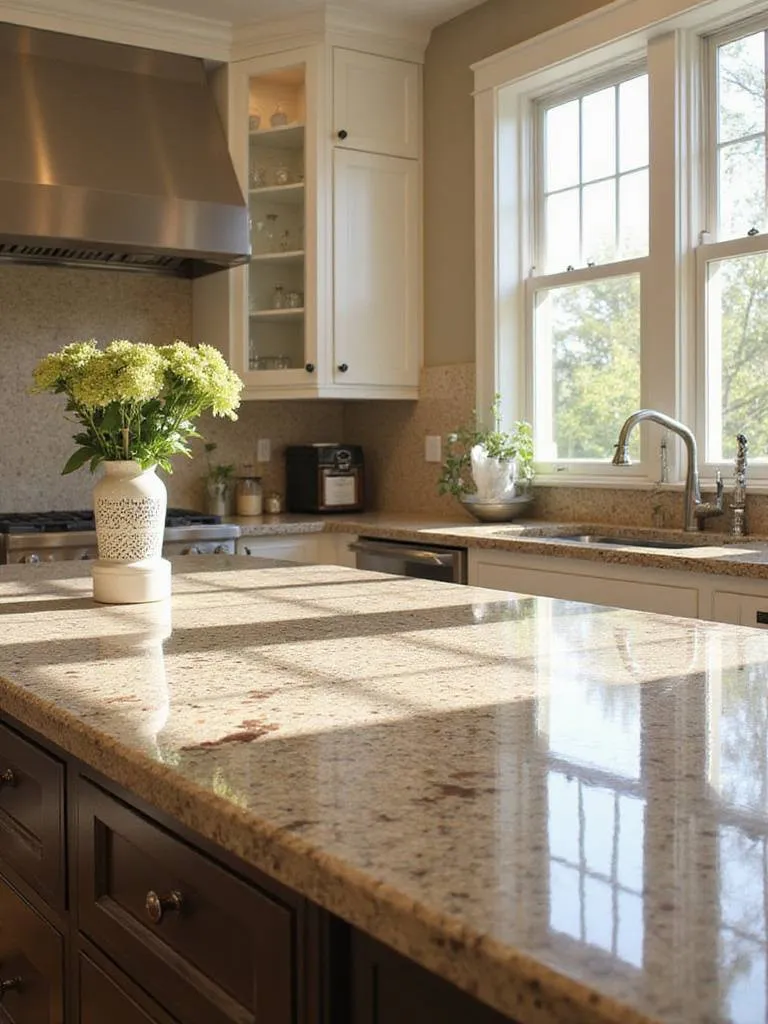
Modern ventilation systems use sensors to detect not just smoke, but also steam, airborne grease, and even unpleasant odors. When you start searing a steak, the system can ramp up the fan speed automatically to handle the smoke, then quietly power down after the air is clear. This hands-free operation is a small luxury that makes a huge difference in the cooking experience.
What’s really interesting is how these systems are starting to integrate with the rest of your smart home. An advanced hood can talk to your HVAC system to ensure you’re circulating fresh air efficiently. Some can even tap into local air quality data and know not to pull in outside air on a high-pollution day. They give you remote control, so if you realize you forgot to air out the kitchen after cooking fish, you can do it from the Living Room Couch. This is about creating a healthier and more comfortable indoor environment, showing how tech can boost well-being and efficiency at the same time.
None of this tech works without a powerful and reliable backbone to support it.
This is the part of the kitchen renovation that nobody ever gets excited about, but frankly, it’s the most critical. Your electrical system is the central nervous system of your smart kitchen. Older kitchens were simply not designed to handle the load of a high-powered induction cooktop, a smart oven, a microwave, and a half-dozen small connected devices all running at once. Getting this right is non-negotiable for a truly functional smart kitchen.

This means planning for more than just a few extra outlets. You’ll need to install dedicated circuits for your major appliances to ensure they get a steady supply of power without tripping a breaker. Think strategically about outlet placement. We can integrate outlets with USB-A and USB-C ports right into the backsplash or kitchen island. Wireless charging stations can be embedded seamlessly into countertops.
You also have to plan for your network gear. Your Wi-Fi router and any network switches need a good home and a dedicated power source. Poor Wi-Fi coverage is the number one reason people get frustrated with their smart homes. During a renovation is the perfect time to run ethernet cables to key locations for the most reliable connection possible. Upgrading to a smart electrical panel can even give you the power to monitor energy usage on a per-appliance basis, helping you spot energy hogs and optimize your home’s efficiency. Investing in this hidden infrastructure is what will determine whether your kitchen can adapt and grow for years to come.
With the serious work of power sorted, we can move on to the more fun parts of the connected kitchen experience.
The kitchen has officially replaced the living room as the central hub of family life. It’s where homework gets done, where you catch up on the day, and where parties always seem to end up. A modern kitchen design needs to embrace this reality with integrated systems for entertainment and communication. This is about making the kitchen a great place to be, not just a great place to cook.

Think about how audio can be woven into the fabric of the room. We can install moisture-resistant in-ceiling speakers that provide crystal-clear sound for everything from your “Morning Motivation” playlist to a hands-free phone call with your mom while you knead dough. A smart display on the counter can be your sous-chef, walking you through a video recipe one minute, and a portal for a video call with a faraway relative the next.
The goal is to create a seamless transition between the kitchen’s different modes. During intense meal prep, your systems might be focused on work—recipes, timers, and news updates. But with a single voice command like “Hey Google, it’s party time,” the lights dim, the music kicks in, and the space transforms into an entertainment zone. It’s this fusion of utility and fun that makes a kitchen the true heart of the home, a place where families connect while creating and sharing meals together.
And while you’re connecting with people, your kitchen can be connecting with your food inventory.
Let’s face it, keeping track of what’s in your pantry and fridge can feel like a full-time job. This is where smart storage and organization go way beyond just having tidy shelves. New systems are being developed that use technology to actively help you manage your inventory, reduce food waste, and even suggest what to make for dinner.
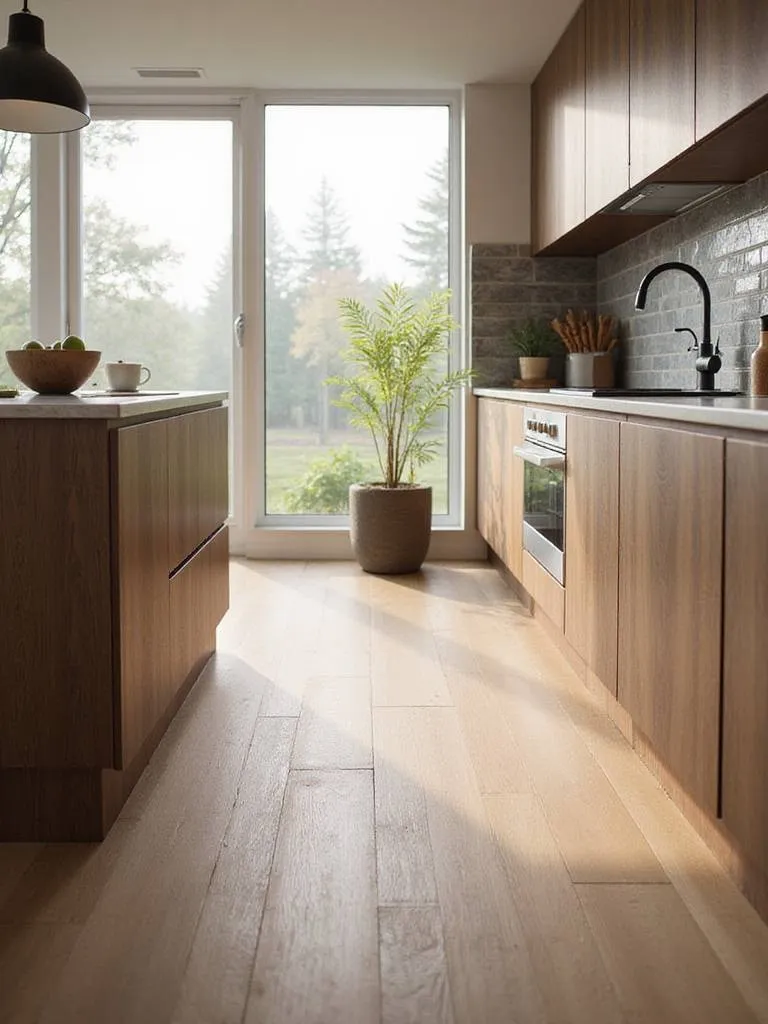
Imagine a pantry system with integrated scales on the shelves. It knows you just used the last of your flour and automatically adds it to your digital shopping list. Consider a spice rack that monitors expiration dates and nudges you to use that cardamom before it loses its punch. Smart refrigerators are getting better at identifying foods and suggesting recipes to use them up before they go bad. Some high-end systems even include specialized, climate-controlled drawers to keep produce fresh for longer.
This isn’t about some over-engineered, complicated system. The designer’s secret is to make organization feel automatic. It’s about creating systems that take the mental load off of you. When your kitchen itself is helping you track what you have and plan your meals, organization shifts from being a constant chore to an invisible background process that just works.
Just as important as managing your food is managing your water.
In the kitchen, water is everything. But smart water management goes far beyond just turning a tap. Modern systems bring a new level of control, monitoring, and safety, helping you improve water quality, conserve resources, and prevent disastrous leaks before they happen.

The most crucial element here is leak detection. Placing small, inexpensive smart leak detectors under your sink, behind the dishwasher, and near the fridge’s ice maker is one of the smartest investments you can make. If they sense moisture, they can send an immediate alert to your phone and, in some systems, even automatically shut off the main water valve to prevent catastrophic damage. Beyond safety, we can look at smart filtration systems that track their own usage and automatically order a replacement filter before the old one expires, ensuring you always have high-quality water for drinking and cooking.
And then there are the Smart Faucets. They sound like a novelty, but they’re incredibly practical. You can ask them for a precise measurement of water—“Hey Google, give me one cup of water”—which is amazing for baking. You can also set specific temperatures for tasks like sanitizing or washing produce. This level of precision helps reduce water waste and adds a layer of convenience to your daily routine, all while ensuring the water you use is as clean and safe as possible.
All this planning is great for today, but a truly smart design also has an eye on tomorrow.
Here’s the tricky part: technology moves fast. The cutting-edge device of today is standard tomorrow and obsolete the day after. So how do you design a kitchen that won’t feel dated in five years? The answer isn’t to try and predict the future, but to build a flexible foundation that can adapt to whatever comes next.

This is more about infrastructure than gadgets. When your walls are open, that’s the time to run extra conduits—empty pipes that you can easily pull future wiring through without having to tear open your walls again. It’s about installing an electrical panel that has more capacity than you currently need. It means choosing flexible mounting systems for things like smart displays or control panels, so you can easily swap them out for newer models down the line.
At first, I used to think the goal was to have the “latest and greatest.” But then I realized it’s much smarter to plan for “easy to upgrade.” Think about emerging tech. Maybe in a few years, we’ll all have augmented reality glasses that overlay cooking instructions right onto our countertops. Or maybe AI-driven nutritional planners will become standard. We don’t know for sure, but by building a robust and accessible infrastructure now, you ensure your kitchen is ready to embrace those changes, whatever they may be. This is what turns a trendy tech kitchen into a timeless, future-ready space.
Of course, a forward-thinking kitchen also has to be a safe one.
Kitchen safety used to mean having a fire extinguisher under the sink. In a modern kitchen, safety becomes proactive rather than reactive. It’s about a network of smart devices that can monitor for hazards, send you alerts, and even take action automatically to prevent an accident before it happens.
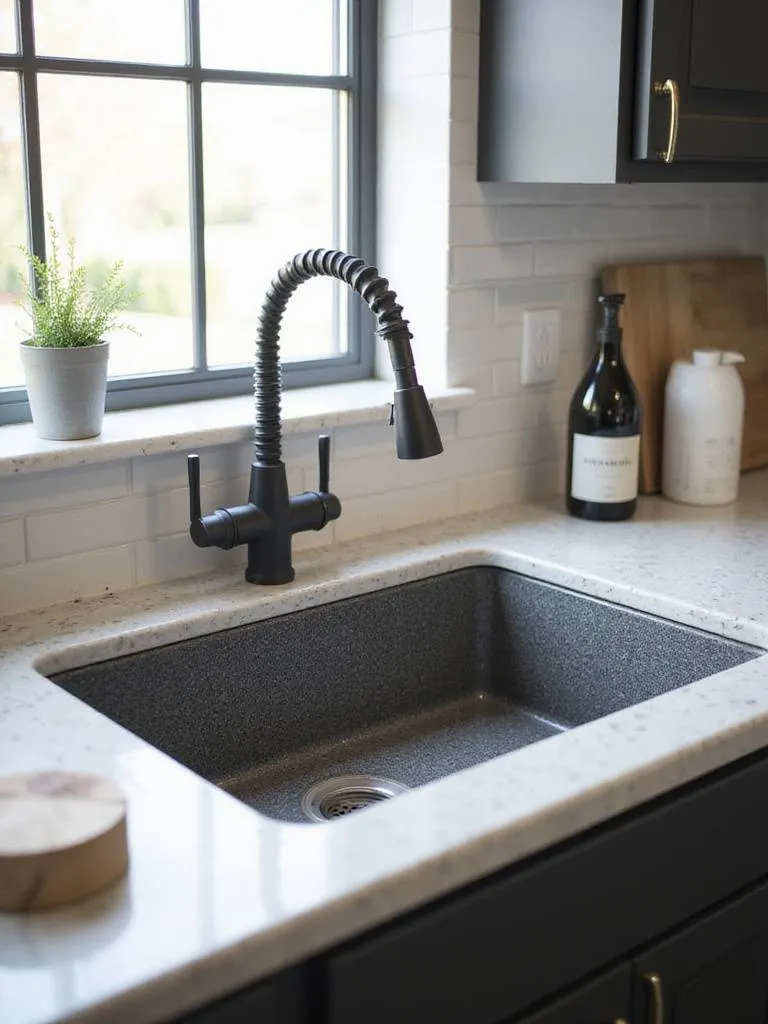
The foundation is smart smoke and carbon monoxide detectors. Unlike their old, screeching counterparts, these send an alert to your phone if they detect a problem, whether you’re home or not. More importantly, they can be integrated into your home automation system. If a smoke detector goes off, the system can automatically shut off your HVAC to prevent smoke from circulating, turn on all the lights to illuminate an escape path, and even unlock the doors. We can install smart sensors that detect gas leaks from a stove or water leaks from a dishwasher, automatically shutting off the corresponding supply line.
Security is part of this too. Thinking about smart locks isn’t just for your front door. A smart lock on a cabinet containing cleaning chemicals or medication provides peace of mind in a house with young children. A discreet security camera can let you check in and make sure you really did turn off the stove before you left for vacation. The real quality of these systems is in their quiet vigilance, providing a layer of protection that operates in the background, giving you one less thing to worry about.
Safety is paramount, and so is being mindful of our impact on the planet.
A kitchen full of powerful appliances can be a major energy consumer. But a smart kitchen can also be an incredibly efficient one. Intelligent energy management is about more than just buying Energy Star appliances; it’s about using technology to monitor your energy consumption, optimize how and when your appliances run, and reduce your home’s overall environmental footprint.
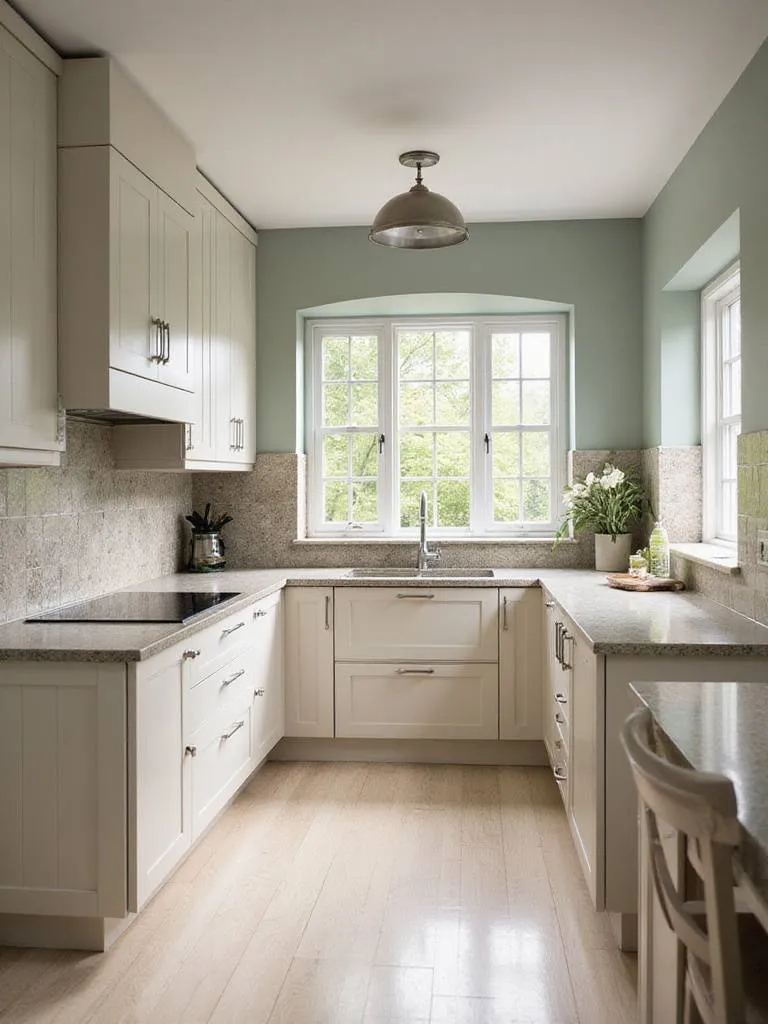
This starts with knowledge. We can install smart energy monitors, either on your main electrical panel or on individual circuits, that give you a detailed picture of where your power is going. You might be shocked to see how much energy some devices use even in standby mode. Once you know your patterns, you can optimize them. Your Smart Home System can be programmed to run high-draw appliances like the dishwasher during off-peak hours when electricity is cheaper. It can even coordinate appliances to avoid running too many at once, preventing demand spikes.
For those with solar panels or home battery systems, the kitchen becomes a key part of your home energy strategy. Your smart appliances can be set to run primarily off solar power during the day or draw from your home battery in the evening. This evolution in kitchen design reflects a bigger cultural shift. We all want to live more sustainably, and this is a tangible way smart technology can help you lower your utility bills and your carbon footprint, all without sacrificing convenience.
Now, let’s talk about the finishing touches—the hardware that you interact with every single day.
Kitchen hardware—the knobs, pulls, and faucets you touch dozens of times a day—is no longer just a decorative choice. In a smart kitchen, this hardware becomes an active interface, blending high-tech function with high-touch design. It’s another opportunity to make your kitchen more intuitive and hands-free.
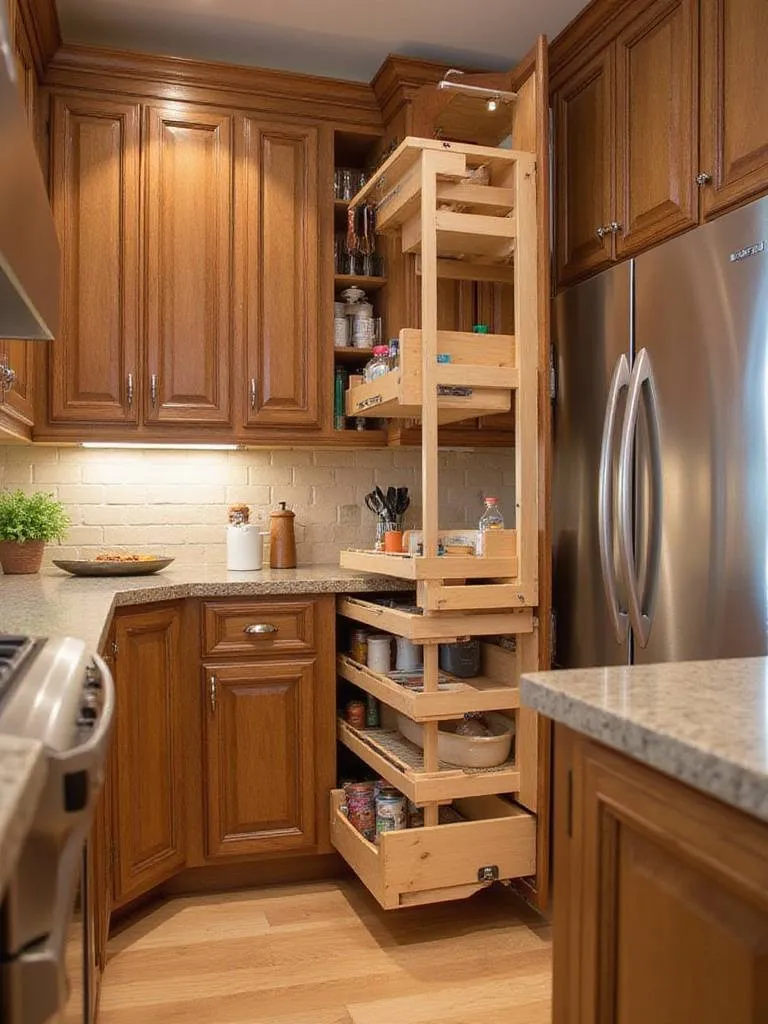
Think about cabinet hardware that responds to a simple touch, popping the door or drawer open when your hands are covered in flour. Or consider pulls with tiny, integrated LED lights that provide a soft glow, adding to your layered lighting scheme. Smart locks aren’t just for doors; they can be integrated into cabinets or drawers to secure valuable items or keep cleaning supplies safely away from children, all without a physical key.
Even drawer systems are getting smarter. Some now include weight-sensing technology that can help with inventory tracking, or automated organization features. It’s about taking these traditional, mechanical elements of a kitchen and giving them a contemporary, intelligent update. By choosing hardware that responds to touch, voice, or even just your presence, you create a kitchen experience that feels more fluid, accessible, and tailored to you.
Once all this amazing hardware and technology is installed, the work isn’t quite done. The next step is crucial.
This is the step that many people skip, and it’s a huge mistake. You wouldn’t buy a car without test-driving it, and you shouldn’t consider your kitchen finished until you’ve thoroughly tested every single smart system. The goal here is to make sure everything works together, not just on its own, and to optimize all the settings for how your family actually lives. This is where you iron out the kinks and make the technology feel truly invisible.

Go through your daily routines. Stand in different corners of the kitchen and try your voice commands. Can the assistant hear you over the running sink or the vent hood? Run your “Cooking” automation scene. Does the lighting come on exactly as you want it? Test the manual backups. What happens if the Wi-Fi goes down? Can you still operate everything? It’s better to discover these issues now than in the middle of hosting a dinner party.
This is also the phase where you move from the installer’s default settings to your personal preferences. The automation might be set to turn the lights off after 5 minutes of no motion, but maybe you find 10 minutes feels more natural. It’s a process of fine-tuning. Most importantly, make sure everyone in the family knows how to use the basic functions. A smart kitchen that only one person can operate isn’t very smart at all. This optimization phase is what transforms a collection of tech into an intuitive, responsive environment.
Part of that optimization involves making sure the controls are easy for everyone to use.
The mark of a brilliantly designed smart kitchen isn’t how much tech you have; it’s how easy it is for everyone—from tech-savvy teens to a visiting grandparent—to use it. The key is to provide multiple ways to control the system. You need to design an interface that is simple, intuitive, and redundant.

Don’t rely on a single point of control. Offer options for every comfort level:
A professional approach prioritizes this simplicity. We can even set up different user profiles. Maybe your profile includes news updates and bright light in the morning, while your partner’s profile starts a coffee-making routine and plays a specific podcast. The goal is to make the technology serve the user, not the other way around. When control is this easy, the technology fades into the background and simply enhances daily life.
And like any valuable system, it needs a plan for the long haul.
A traditional kitchen requires cleaning and maybe fixing a leaky faucet now and then. A smart kitchen requires a different kind of upkeep. Software needs updating, security needs monitoring, and systems need occasional optimization to keep everything running smoothly. Thinking about this from day one will save you massive headaches down the road.
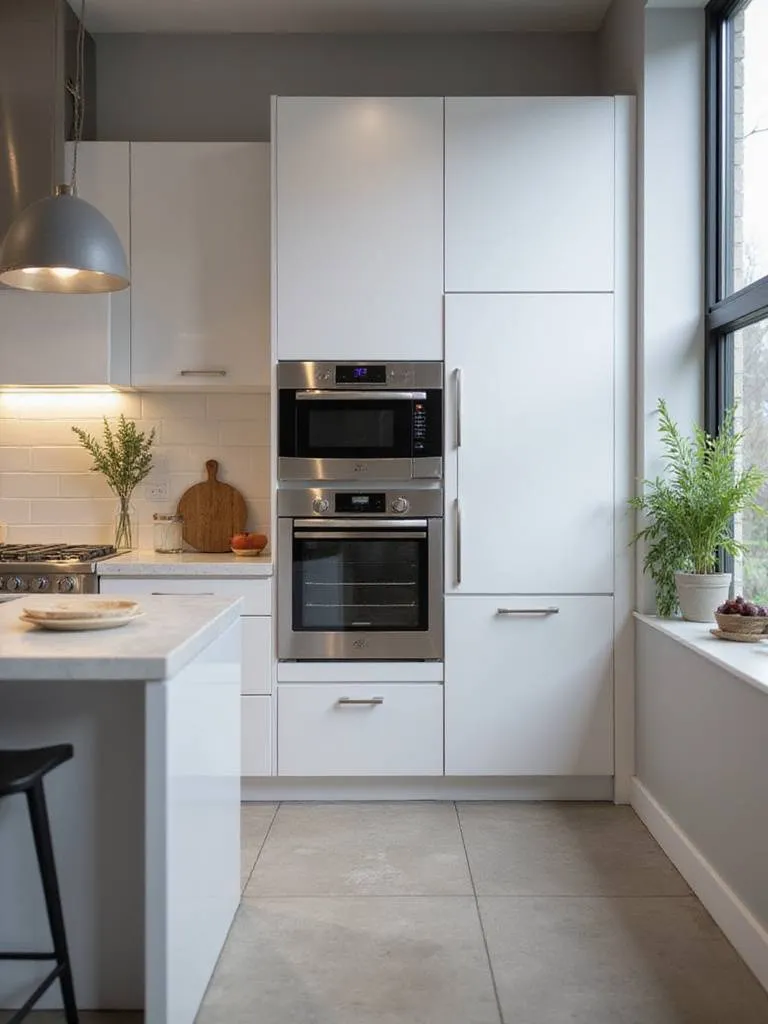
Your protocol doesn’t have to be complicated. Start by documenting everything. Keep a simple file with all your device models, network settings, and a few basic troubleshooting steps. Then, create a simple schedule. Maybe once every quarter, you go through and check for software and firmware updates for all your connected devices. These updates often include critical security patches and new features.
It’s also a good idea to know who to call. Establish a relationship with a local tech integrator or have the contact info for manufacturer support handy. Just like you have a trusted plumber, having a trusted tech expert can be a lifesaver. This consistent maintenance is what protects your investment and ensures your smart systems continue to be a source of convenience, not a source of problems, for years to come.
This leads directly into the final piece of long-term planning.
Here’s a dose of reality: the smart devices you install today will not last as long as your stone countertops. That’s just the nature of technology. So, a critical part of a future-ready design is planning for this technology lifecycle. You need a strategy for how you’ll manage upgrades and replace components when they reach the end of their useful life without having to tear your whole kitchen apart again.

Before you buy anything, do a little research. What is the manufacturer’s policy on long-term software support? Are they a new startup that might be gone in two years, or an established brand? Whenever possible, choose devices that use open standards and protocols (like Matter), which makes them more likely to work with future products from different brands.
Think modularly. Instead of an all-in-one smart appliance where a single failed component bricks the whole thing, perhaps it’s better to use separate smart plugs or switches that can be easily and inexpensively replaced. This is why we ran those extra conduits back in step 16! They make it much easier to swap out a key component down the road. Accepting that technology will evolve and planning for that evolution is what separates a good smart kitchen from a great one.
Finally, we’ve reached the last, and most important, step.
You’ve done all the planning, run the wires, installed the gear, and tested the systems. Now comes the final, most satisfying step: making the kitchen truly, uniquely yours. This is where you transform your collection of smart devices into a cohesive system that reflects your family’s rhythms, your cooking style, and your personality. This is the personalization that makes your kitchen feel less like a project and more like home.

This is all about creating custom automation scenes that fit your life like a glove. For example:
Adjust the system’s responses to match your preferences. Do you want your alerts to be a gentle chime or a voice announcement? Do you want your lighting to change with the seasons, tracking the later sunsets in summer? This is the stage where you get to teach your kitchen how you live. The result is a space that feels like it’s in sync with you—a room that’s not just technologically advanced, but deeply and personally intuitive.
And there you have it. You’ve journeyed from a high-level dream to a detailed, personalized reality. Building a smart kitchen is about so much more than just cool appliances; it’s about intentionally designing a space that makes your life easier, safer, and more enjoyable. By methodically working through these steps, you’ve built a kitchen that balances powerful functionality with timeless design, creating an environment that feels both cutting-edge and comfortable.
The best smart kitchens I’ve had the pleasure of designing are the ones where the technology feels invisible. It just works, humming along in the background, supporting your life without demanding constant attention. It’s the oven that knows what to do, the lights that adjust to your mood, the fan that clears the air before you even notice it’s needed.
Ready to build a kitchen that’s a true partner in your culinary life? The future of how we cook and live is waiting for you. It all starts with that first step: defining what you truly want your home to do for you.